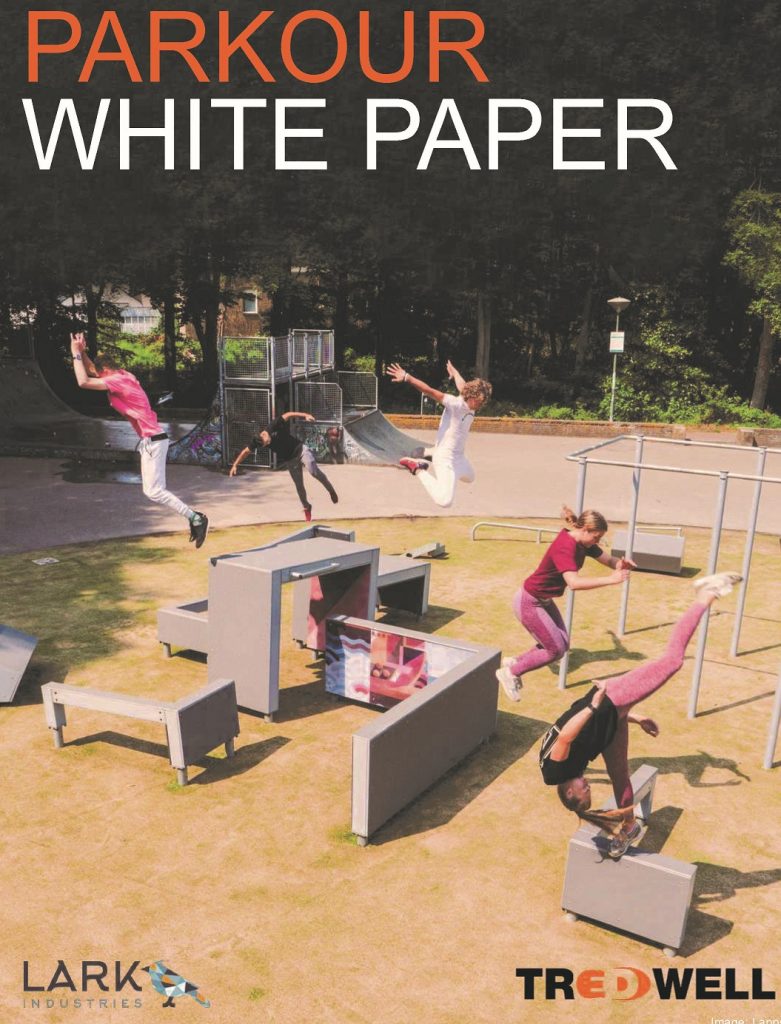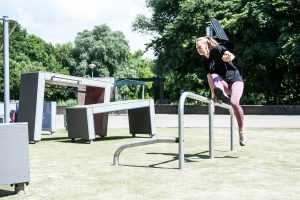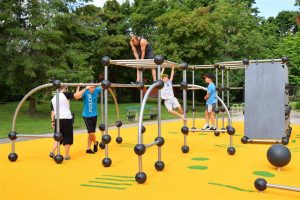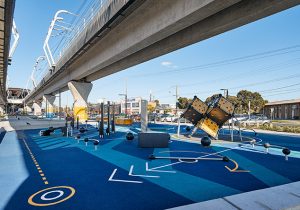The Parkour White Paper has been developed in collaboration with Lark Industries, an Australian company with a combined total of over 70 years’ experience in the play and sports industries. Lark Industries partner with some of the most experienced European designers, manufacturers, professionals and elite sports men and women from across the globe and have extensive knowledge in parkours background, design, Standards, and implementation.

Parkour, also known as “freerunning” and “Art du Déplacement” was founded in the 1980’s and is a non-competitive sport which involves participants using their bodies to move freely and efficiently over and through obstacles and features found in urban and natural environments by running, jumping, climbing, vaulting, swinging and rolling.



Images provided by Lark Industries
Parkour has established itself as one of the most popular and practiced sporting codes across Australia and the world, and yet is still severely under-catered to due to the lack of detailed knowledge of the sport. The Parkour White Paper was developed to provide in-depth research to demonstrate the value and benefits parkour can offer to local governments, schools and communities to demonstrate why it should be considered for recreation and public open spaces moving forward.
In recent years there has been a large shift in industry and lifestyle trends across Australia which support the development of more unstructured sporting facilities such as parkour. These include:
- Higher participation rates in unstructured sports to better suit busy lifestyles
- Higher safety standards and community expectations with new built infrastructure
- The need to address higher inactivity and obesity levels across all ages
- Easier access to user-generated content and web-based systems which can be used to inspire
- Governments at all levels being able to utilise sport and recreation to achieve policy objectives
Despite parkour being highly popular across all age groups, it is often overlooked as an option for public open space developments in favour of typical activities such as skate parks or playgrounds. Parkour is a relatively new sport that has grown in popularity quickly to rival other highly established sports across the world. It is a viable and versatile recreation option for parks and urban areas that provides numerous mental and physical benefits to practitioners and casual participants, including building confidence, determination, self-discipline, self-reliance, strength, speed, endurance, balance, and cardiovascular endurance, it also requires quick thinking and improves hand-eye coordination. Parkour fosters creativity, reduces anti-social behaviour, improves risk evaluation, and encourages autonomy, social interaction, and self-expression.
The Parkour White Paper provides a comprehensive background of the sport and utilises consultation and market research to demonstrate how parkour is a beneficial and in-demand investment for the community. It examines best practice case studies and outlines the numerous benefits parkour provides to participants mental and physical health. It showcases the sports diversity, popularity, and how it aligns with Australia’s changing lifestyle trends.
In early 2022, Tredwell and Lark Industries, alongside other industry professionals presented the White Paper as a webinar for Parks and Leisure Australia WA. The webinar was joined by over 90 Council representatives and industry professionals from across Australia. The webinar was a great success and achieved the White Papers goal of benefitting the parks and leisure industry through increasing the awareness of parkour to industry professionals. The White Papers aim is that these professionals will begin providing for this now well-established, socially and physically beneficial sport to align with the developing trend of people undertaking more unstructured sporting activities to suit busier and more flexible lifestyles.
The White Paper has also been selected to be presented at the National PLA Conference in October 2022.

